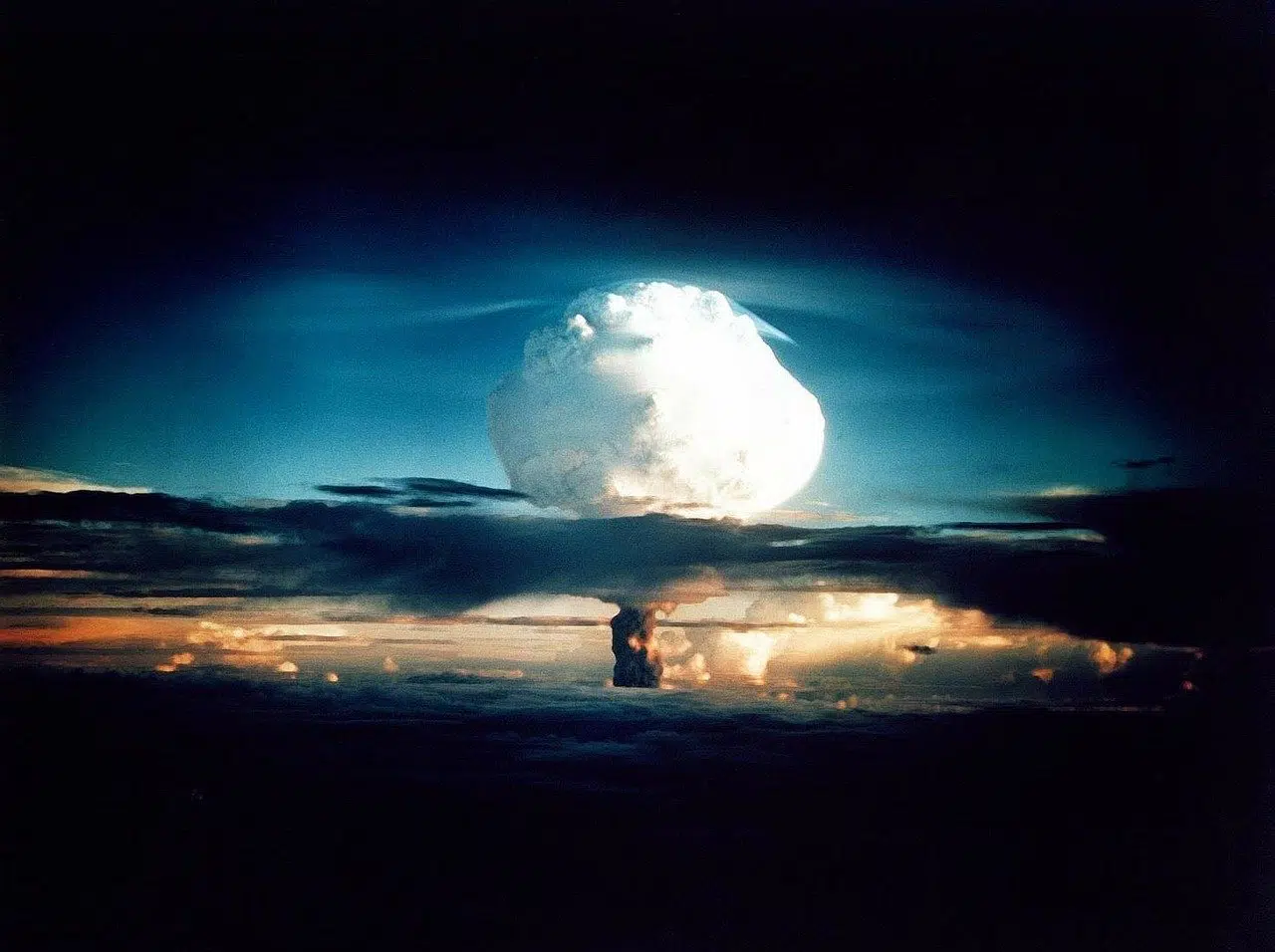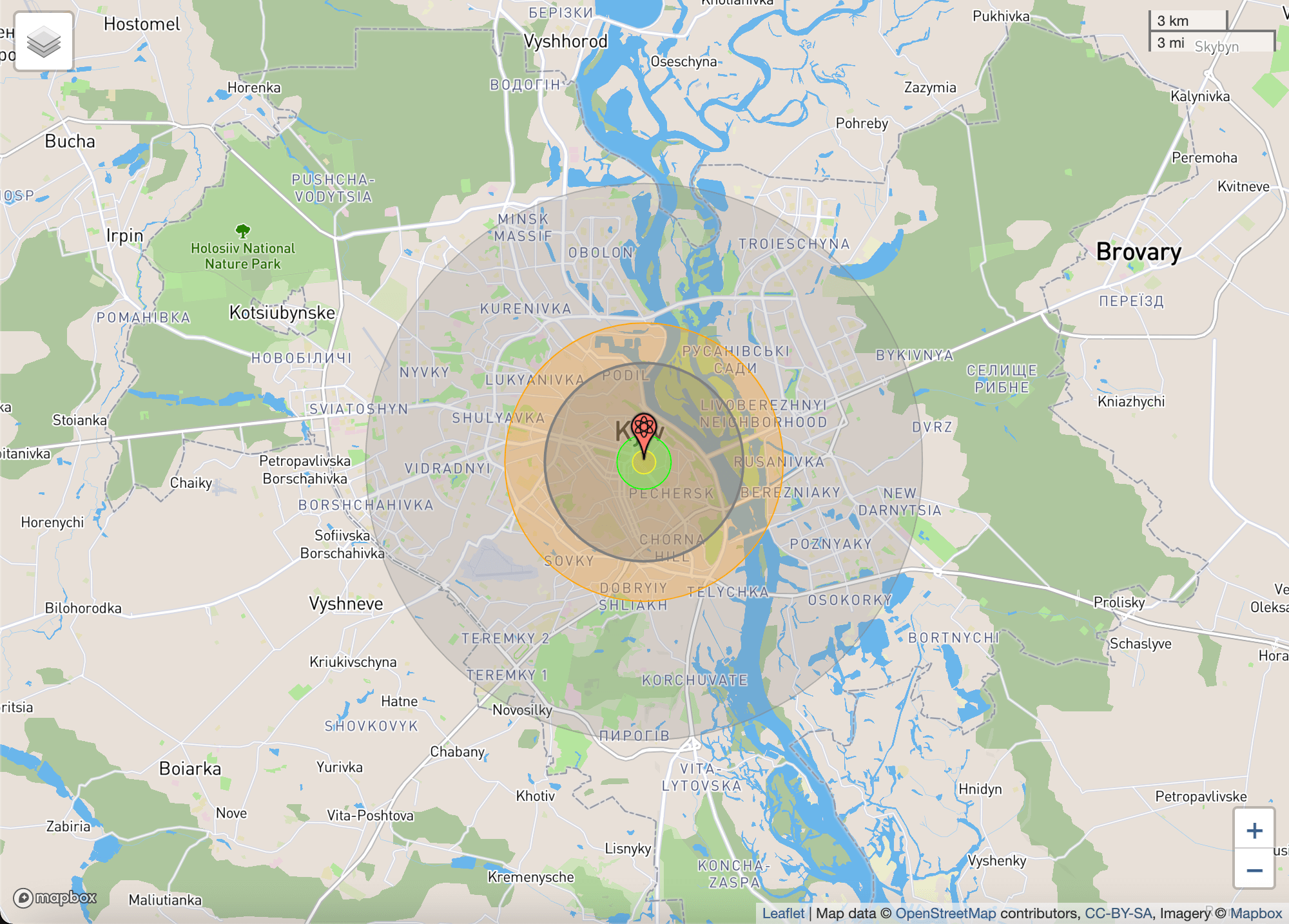
Could a nuclear war erupt over Russia’s invasion of Ukraine? And, if in the unlikely scenario, it does, what will be the consequences for humanity?
Images and videos of the Russia-Ukraine conflict gave the world pause, but it may have appeared quite remote or far away for some; so, when Russian President Vladimir Putin announced, on Sunday, that his nuclear forces were shifting to a higher state of alert, calling it “special combat readiness,” it shook the world to its core.
On Wednesday, Russian Foreign Minister Sergei Lavrov said World War III would involve nuclear weapons and be very destructive. Russia would face “real danger” from Ukraine, if it acquired nuclear weapons, he said.
The possible effects of a nuclear war, including both environmental and civilian, are unthinkable.
The human toll of nuclear war
A possible nuclear weapons exchange in Ukraine would have enormous implications for Europe and beyond.
A nuclear strike would unleash suffering on a scale not seen since World War II — not even considering advances in nuclear technology since then — so it is very possible that the devastation that the next nuclear strike would incur is far, far worse.
It is very hard to picture what the effect a nuclear attack would look like, but Alex Wellerstein, a nuclear historian at the Stevens Institute of Technology, has created a website called Nukemap that allows users to “drop” a specific bomb on any target.

Detonating the roughly 140-kiloton explosive that North Korea tested in September 2017 in the heart of Kyiv resulted in a devastating human toll, with nearly 25,000 deaths and nearly 4,500 injuries, according to Nukemap.
The center yellow circle, which is the fireball radius — that is, the mushroom cloud — would extend out about 0.25 square miles. Those within the green circle, in an approximately 1.2-square-mile area, would face the heaviest dose of radiation.
“Without medical treatment, there can be expected between 50% and 90% mortality from acute effects alone,” Nukemap says here. “Dying takes between several hours and several weeks.”
Radiation poisoning would result in:
- Nausea and vomiting
- Spontaneous bleeding
- Diarrhea, sometimes bloody
- Severely burnt skin that may peel off
The dark grey circle in the middle, which includes a 17-square-mile area, denotes flattened residential buildings, killing people in or near them, with debris and fire everywhere.
People in the bigger yellow circle, encompassing a 33.5-square-mile area, would receive third-degree burns. “There’s a bright flash of light,” says Brian Toon, a scientist and expert on nuclear disasters at the University of Colorado Boulder, in an interview with Vox. Those exposed to the light would get burns, assuming their skin was exposed. The light would also “easily ignite fires with flammable objects like leaves, twigs, paper, or your clothing.”
Most victims would likely not feel much pain because the burns would destroy nerves that control pain, but they’d cause major scarring or the inability to use certain limbs, while others might require amputation, according to Wellerstein’s website.
In the biggest circle, a 134-square-mile area encompassing almost the entirety of the air-blast zone, people can still die, or at least receive severe injuries, but the blast — outside of the other circles — would primarily just break windows. And those standing near said windows may be killed by glass shards, or at least be seriously wounded.
Those who survive the bombing and its effects, will have to walk through burning rubble and pass lifeless, charred bodies to reach safety, which will likely cause severe mental distress.
Even though some of them will ultimately survive, others will succumb to sustained injuries or radiation, and will likely reel with the after-effects of mental illness for many years thereafter. And wind will carry the debris far outside the blast zone, sickening countless others, even in areas far, far away from the blast.
As for Kyiv, it will likely take decades and billions of dollars not only to rebuild the city but to eliminate the radiation entirely.
It is worth noting that all of the above are estimates for one strike on one location. In an actual nuclear war, there would be wider and more devastating consequences, with the effects after the conflict being much worse than the attacks themselves.
The attacks would also change the course of human history.
“Almost everybody on the planet would die”
Over the past few decades, numerous experts have been trying to understand the true impact nuclear war would have on the planet.
In an interview with Vox, Alan Robock, an environmental sciences professor at Rutgers University, in New Jersey, explains his work has focused on three factors — economic, scientific, and agricultural models — that aim to explain the long-term impacts of a nuclear war.
He has found the most devastating long-term effects come down to the black smoke that hampers the growth of crops, and will likely have unintended side effects that impact the entire globe, not only just the areas targeted by strikes.
The dust and particulates in the air, likely exacerbated by the fact that cities and industrial areas would likely be targeted for their impact, would produce tons of smoke. The smoke, some of which would make it to the stratosphere, meaning it would stay there for years, would expand around the world as it heats up and eventually block out sunlight over much of the planet.
Global impact, however, would depend on the amount of smoke.
While scientists’ models and estimates vary, it’s believed that about five million to 50 million tons of black smoke could lead to the so-called nuclear autumn, while 50 million to 150 millions tons of smoke might plunge the world into a nuclear winter.
If the latter scenario came to pass, “almost everybody on the planet would die,” Robock said.
“Nuclear autumn”
A 2016 study looked at the ramifications of a nuclear confrontation between India and Pakistan.
“Even a ‘small’ nuclear war between India and Pakistan, with each country detonating 50 Hiroshima-size atom bombs, could produce so much smoke that temperatures would fall below those of the Little Ice Age of the fourteenth to nineteenth centuries, shortening the growing season around the world and threatening the global food supply,” researchers wrote at the time.
An India-Pakistan nuclear war could emit at least five to six million tons of black smoke into the stratosphere, leading to massive reductions in agriculture production around the globe.
Even American and Chinese food production would be affected, especially for corn and wheat, plunging at least 20 to 40% in the first years post-attack. It’s possible that the cooling, which would last at least a decade, would plunge temperatures to levels “colder than any experienced on Earth in the past 1,000 years,” researchers added.
Experts have termed the possibility of nuclear war, with some warning that a scenario in which agriculture production is impacted so viciously as a “nuclear Autumn.”
Even in a so-called “limited” war situation, up to two billion people would be at risk of starvation, with most being in the Americas, Europe, and Southeast Asia. “The death of 2 billion people wouldn’t be the end of the human race, but it would be the end of modern civilization as we know it,” says Ira Helfand, a board director at the anti-nuclear war Physicians for Social Responsibility, in an interview with Vox.
The lack of food would most definitely drive up prices for whatever remained and likely cause worldwide conflicts and wars over resources. Helfand suggests the situation could worsen to the point that another nuclear war could start, as food and water is seized by states.
See all the latest news from Greece and the world at Greekreporter.com. Contact our newsroom to report an update or send your story, photos and videos. Follow GR on Google News and subscribe here to our daily email!



